(Graphic: Kaylee VanTuinen, Native News Online)
NINE LITTLE GIRLS
For more than a decade, nine sisters battled the South Dakota legislature for the right to sue the Catholic Church for sexual abuses they endured during the 1950s and '60s at an Indian boarding school the church operated. State lawmakers have denied these women and hundreds of other Native survivors of sexual abuses the right to sue, and some have died without receiving justice.
by Jenna Kunze
*TRIGGER WARNING* This story includes accounts of physical, mental, sexual and emotional abuse that survivors experienced in Indian boarding schools. If you do not have the capacity to engage with these stories right now, we encourage you to read them when you feel more supported. The National Native American Boarding School Healing Coalition (NABS) has a comprehensive list of healing resources available on its website.
Almost every February for a decade, Barbara Charbonneau-Dahlen and her eight sisters donned their traditional Turtle Mountain Band of Chippewa regalia, took deep breaths, and piled into cars to travel to the South Dakota Legislature in Pierre. In the state capitol building, the sisters told lawmakers year after year about the abuse they endured as children in the 1950s and ’60s at the hands of priests, nuns, and staff at St. Paul’s Indian Mission boarding school in Marty, South Dakota.
The sisters’ accounts of molestation, rape, and even a forced abortion aligned with a larger picture of abuse painted by more than 100 other boarding-school students in lawsuits against the Catholic dioceses of Sioux Falls and Rapid City that began in 2003.

From left, Geraldine Dubourt, Francis Hart, Marie Ogitchida, Mikayla Maxwell and Michelle Dauphinais Echols stand on the steps of the South Dakota Capitol in Pierre, S.D. on Monday, Feb. 24, 2020. Lawmakers killed a bill that would have given survivors of childhood sexual abuse a two-year window to sue organizations in which abuse occurred. (AP Photo/Stephen Groves)
But those lawsuits were dismissed by the courts in 2010 as a result of a change in the law. Just days before the Charbonneau sisters and others were set to go to trial, the South Dakota Legislature approved a last-minute law to narrow the statute of limitations for child sex-abuse cases. The revised statute, passed by both houses and signed into law by Gov. M. Michael Rounds in March 2010, prohibits any victim who has reached the age of 40 from filing civil lawsuits against those responsible for their abuse or against institutions that knew or should have known about sexual abuse.
As a result, a South Dakota circuit court judge retroactively applied the revised statute of limitations to dismiss 18 pending boarding-school lawsuits, including the Charbonneau sisters’ suit. The sisters appealed that decision, but the Supreme Court of South Dakota upheld it.
The 2010 revised statute was proposed and written by Steven Smith, the defense attorney for the Congregation of the Priests of the Sacred Heart, the religious order that has run an Indian boarding school—St. Joseph’s Indian School—in Chamberlain, South Dakota, since 1927. At the time, Smith was defending at least four active cases against priests who had worked at St. Joseph’s, including Matthew Miles, who was convicted in the late 1980s for sodomizing young boys in Washington, D.C. Miles had worked at St. Joseph’s in the 1970s, where he was accused of raping at least one student.
After the Charbonneau sisters’ cases were dismissed, they and some lawmakers rallied every year behind legislation that would either rescind the revisions to the statute of limitations law, or open a two-year window for victims of childhood sexual abuse to file lawsuits against the organizations responsible for the institutions where it occurred.
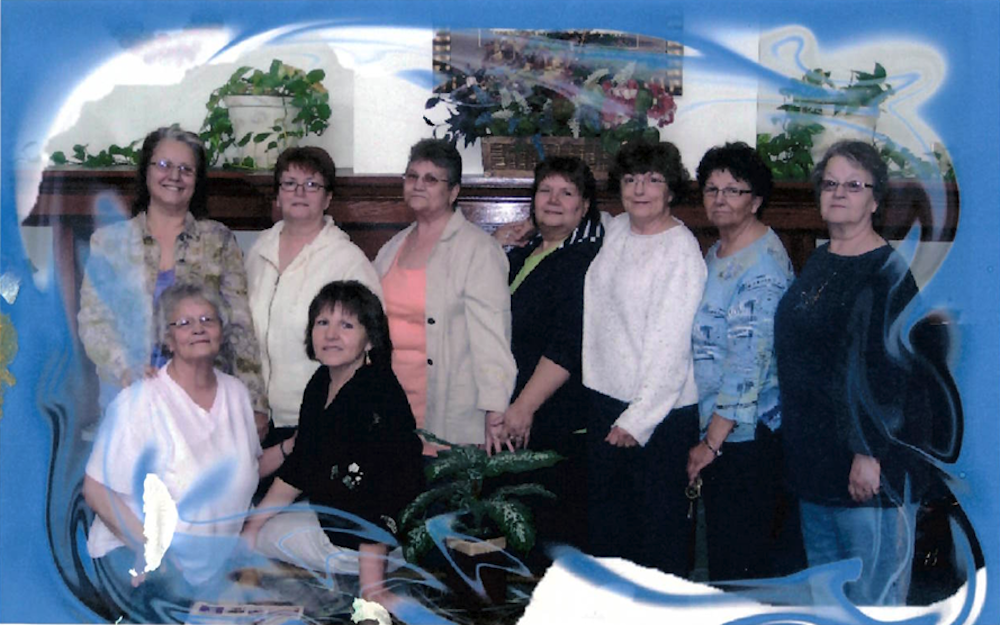
The nine Charbonneau sisters as adults. Back row left to right: Gerri, Louise, Mary Lou, Barbara, Pat, Francine, and Laurette. Front sitting left to right: JoAnn and Roberta. (Photo: Courtesy of Sarah Sharpe)
The Legislature blocked those bills each time. Lawmakers were swayed by testimony from lobbyists for the Catholic Church, insurance agencies, and Steven Smith. Opponents claimed that past abuse is “nearly impossible” to prove, that it would be “unfair to existing congregations of churchgoers” in the state to “defend and potentially pay a claim” for something that happened decades before, and that survivors are simply “reaching for the brass ring,” according to audio recordings from almost a decade of legislative hearings.
Now, Charbonneau family members say that lawmakers' racism, ignorance, and blind support of the church has had its intended effect: Boarding-school survivors are aging, and some have died before ever getting their day in court.
“My mom always said, ‘They’re waiting for us to get old and die so they can forget all about this,’” Sarah Sharpe, Barbara Charbonneau-Dahlen’s 40-year-old daughter, told Native News Online at her stepson’s seventh birthday party in Grand Forks in February 2023. Her mother, who had become one of the driving forces behind the movement to repeal the revised statute of limitations, passed away suddenly in May 2021 at age 68 of health complications from long COVID. The year before, Louise, another sister active in the movement, had died of an aneurysm. A third sister, Laurette, died of cancer in the fall of 2021.
With the deaths of the most vocal of the Charbonneau sisters, along with grief and health complications stemming from their own traumas, the remaining six sisters have not brought new legislation forward since 2021. Instead, the next generation—their children—hope to take on the battle, though they are struggling to find their footing.
“My mom always said, ‘They’re waiting for us to get old and die so they can forget all about this. It's our time to stand up and fight for them.”
Sarah Sharpe, the daughter of sister Barbara Charbonneau-Dahlen.
“It's our time to stand up and fight for them,” Sharpe said. “Their voices were silenced, [which] is what South Dakota wants.”
THE BEFORE
Before they were boarding-school students and survivors, the Charbonneau sisters were just kids, growing up in Olga, North Dakota, 25 miles south of the Canadian border. The girls were born to a French father and a Chippewa mother among a total of 23 children, including half-siblings from both of their parents’ first marriages.
Mary Lou Byron, 80, is the second-oldest Charbonneau sister. She lives in Washington state, about an hour outside of Seattle, where she settled with her late husband and their four children in the early ‘60s. She has cropped gray hair, a hearty laugh, and is quick to fold her adult grandson into an embrace. When Mary Lou spoke to me of her boarding-school experience, which she hadn’t since giving her court deposition in 2010, she physically recoiled in her chair.
Seated at her son Neil’s kitchen table one afternoon in May 2023, Mary Lou recounts details about her childhood before boarding school. She remembers how her mother used to bake 17 loaves of bread every two days to feed all her kids. She remembers playing on the old teeter-totter her father made, and bobsledding up and down the hills of Olga in winter. She remembers lying on the floor to eavesdrop on her parents speaking French below, trying to decipher the foreign words, and how she and her sisters knew every make and model of car that came through Olga, a town with one stoplight.
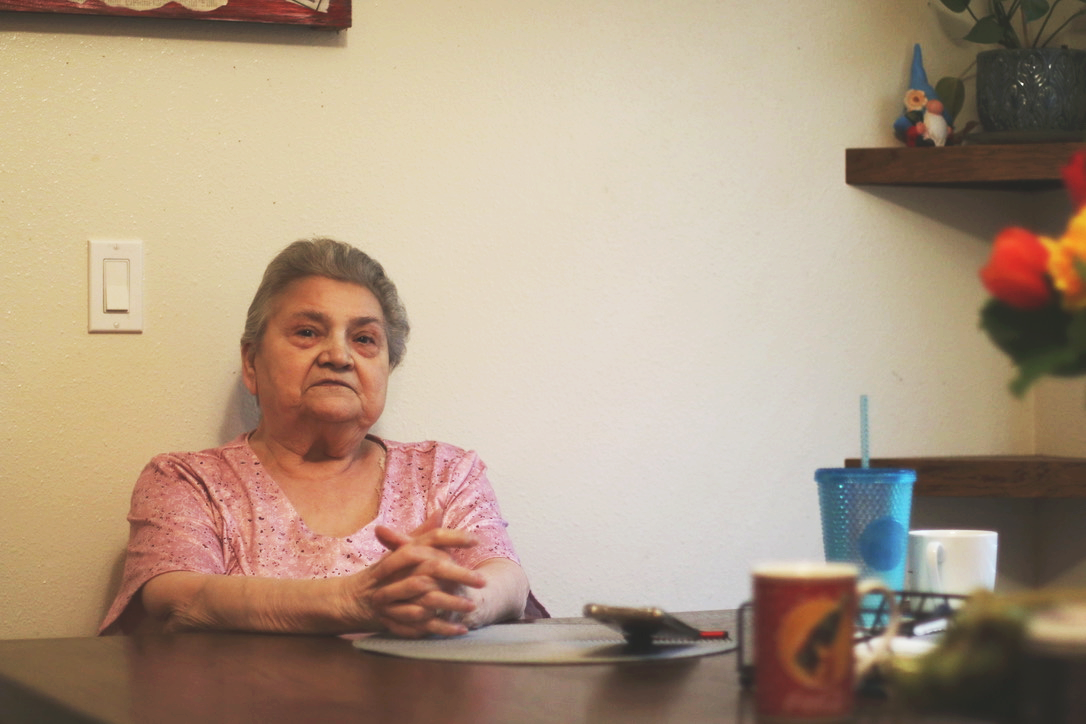
Seated at her son Neil’s kitchen table in May 2023, Mary Lou Byron recounts details about her childhood before and after boarding school. (Photo: Jenna Kunze)
Mary Lou was seven years old in 1950 when her mother signed her and a few of her sisters up to attend St. Paul’s Indian Mission boarding school, 460 miles away. At the time, Indian boarding schools were in full swing across the nation, as part of the federal government’s 150-year-long initiative to assimilate Native youth into dominant white society. These schools were “free” for families; they were paid for with federal funds generated by proceeds from cessions of Indian territories to the United States through treaties, the Federal Indian Boarding School Investigative Report writes.
By 1926, more than 80% of Indigenous youth across the country were enrolled in an Indian boarding school, according to the National Native American Boarding School Healing Coalition.
“Because Mother never read, she wanted us to be better than an Indian that never went to school and didn’t know how to sign his name. She just wanted us to better ourselves,” Mary Lou said. “It wasn't an option: We went to school, and that was it.”
The Charbonneau girls’ Uncle Ray worked at St. Paul’s Indian Mission, and picked them up at the start of the school year in a big yellow school bus on his drive south to Marty from the Turtle Mountain Indian Reservation. Their trip lasted 500 miles. “It was full, there were lots of kids,” Mary Lou remembers.
St. Paul’s, opened in the village of Marty on the Yankton Sioux Reservation in 1924, was one of more than 500 Indian boarding schools operated or funded by the federal government through the late 1960s. Half were managed by Christian groups. St. Paul’s was controlled by the Diocese of Sioux Falls—the diocese responsible for Catholic institutions in South Dakota east of the Missouri River—but staffed by different religious organizations, including Blue Cloud Abbey, Sisters of the Blessed Sacrament, and Oblate Sisters of the Blessed Sacrament.
THE DURING
At St. Paul’s Mission—or “Marty,” as former students colloquially call it— the Charbonneau sisters were separated by design. They were grouped in different dorm rooms by their ages, Mary Lou remembers. Her younger sisters would seek comfort from the older girls by sticking their fingers underneath the door to touch hands—until the nuns caught them and further separated the girls.
“You couldn’t connect with your family. From the moment you got there, it was total segregation at Marty,” Geraldine Charbonneau Dubourt, 75, said in a Pacifica Radio interview recorded in 2019. “They reinforced it by beatings, by strapping, by shaving heads; ‘you’ll go to hell, your parents will die, your parents will go to hell.’”
“We were all scared,” Mary Lou told Native News Online of her first impression of boarding school. “We’d never been without Mom and Dad.”
Mary Lou’s only fond memory of school is of a classmate braiding her hair. By contrast, she has many memories that caused her to visibly tremble during our conversation. She recalls nuns wiping her face in her own urine when she wet the bed as a fourth grader. Later, she said one of the nuns would sexually abuse her by sticking a hand in her underwear, under the guise of checking if she had wet the bed. Her story matches the testimony she gave in her deposition 13 years ago, which was included in the joint lawsuit the nine sisters filed in October 2008 in the Second District Circuit Court in Sioux Falls.
At the time, Mary Lou felt alone in her abuse. It wasn’t until decades later that she discovered she was not. Although each Charbonneau sister suffered physical, mental, emotional, and sexual abuses, they didn’t share their experiences with one another until later in life, in part because they had blocked them out, she said.
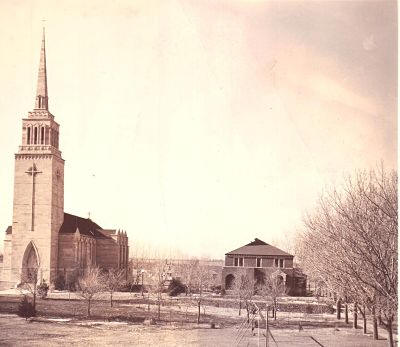
St. Paul’s Indian Mission School on the Yankton Sioux Reservation was controlled by the Catholic Diocese of Sioux Falls and staffed by different religious orders including the Blue Cloud Abbey, Sisters of the Blessed Sacrament, and Oblate Sisters of the Blessed Sacrament. (Photo: 9littlegirls.com)
Louise Charbonneau Aamot, who died in 2020, was the first sister to start having flashbacks, in the early 2000s. It was right around the time the sisters’ mother passed away, when they ranged in age from their mid-40s to their late 50s. When they gathered at their parents’ farm in Olga, Louise broached the topic for the first time. She asked her sisters: “Were any of you abused at Marty like I was?”
“When [Louise] said that out loud, it’s like Pandora’s box was open,” Barbara (who died in 2021) recalled in the 2019 radio interview. Barbara described being in a “cocoon” until her fifties, when the memories the sisters—and many other abuse survivors—had spent decades pushing out came rushing back in. An awareness that they haven’t been able to ignore or quell since flooded them.
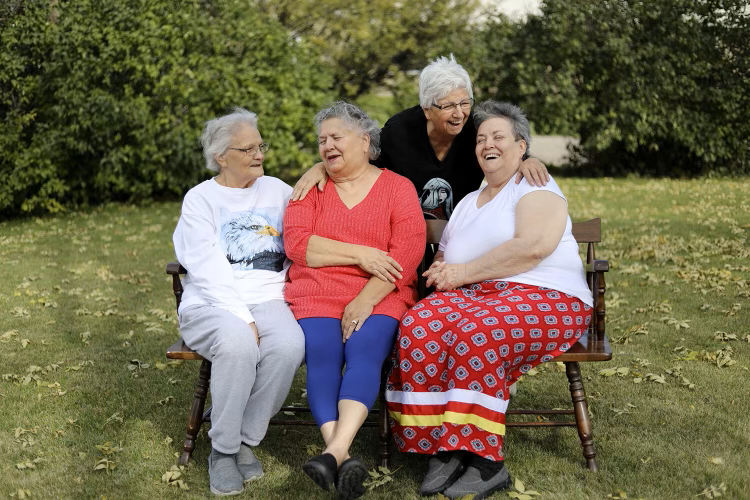
Four of the sisters (from left) JoAnn, Barbara, Francine (standing), and Louise. At a gathering after their mother passed, Louise asked her sisters: “Were any of you abused at Marty like I was?” When she said it out loud, Barbara remembered, “it’s like Pandora’s box was open. (Photo: Courtesy of Sarah Sharpe)
All nine of the Charbonneau women recounted different memories of abuse in depositions included in their 2008 lawsuit. In total, they named 12 nuns and priests in the suit, and mentioned several other clergy or staff members whose names they could not recall.
Three of the sisters, including Mary Lou, named the same nun, Sister Davidica, as their abuser, for incidents including breast fondling and requiring one of the girls to be naked while being spanked. Other sisters detailed abuse from other nuns and priests. Three of the girls reported a similar experience: a doctor with the Indian hospital who, “under the auspice of being checked for scoliosis” forced the girls “to strip completely naked, walk to one end of the room, and bend over.”
At 16, one of the Charbonneau sisters was raped and made pregnant by a priest at St. Paul’s Indian School, she told Native News Online. This allegation wasn’t listed in the lawsuit, though the sister has repeatedly testified to the Legislature about her rape.
Thinking she had the flu, she went to the school’s infirmary, where nurses aborted her fetus and burned it in the incinerator, she said. “We were well used in every way,” the sister said in her testimony. “They could, so they did.”
THE AFTER: 'A GREAT STATE FOR PEDOPHILES'
“I’d like you to look at me,” Barbara Charbonneau-Dahlen told South Dakota lawmakers in 2012, the first year that a bill to rescind the revised statute of limitations was introduced in the House Judiciary Committee. “I could be your wife. I could be your aunt. I could be your sister. I could be your mother. Look at me and see that the trauma of childhood sexual abuse does not pick a time to remember.”
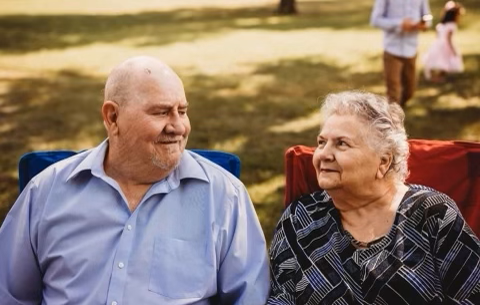
Barbara Charbonneau-Dahlen and her husband. (Photo: Courtesy of Sarah Sharpe)
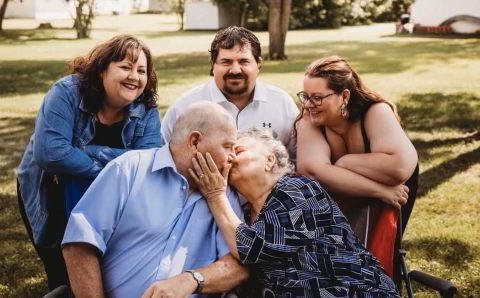
Barbara Charbonneau-Dahlen, her husband and their three children. (Photo: Courtesy of Sarah Sharpe)
Church and state-condoned abuse of Native American children at boarding school was not an experience unique to the Charbonneau sisters. For a 150-year period, federal policy was to remove Native children from their homes and send them to boarding schools, sometimes hundreds of miles away. There, they would be raised by priests and nuns under a mixed model of hard labor and “education” that used “systematic militarized and identity-alteration methodologies” to assimilate the youth into the dominant society, according to a federal investigation conducted by the Department of the Interior in 2022.
The preliminary report, published in May 2022, named the “rampant physical, sexual, and emotional abuse; disease; malnourishment; overcrowding; and lack of health care in Indian boarding schools,” and found that at least 500 Native children had died at boarding schools. The report’s author, Assistant Secretary of the Interior Bryan Newland (Bay Mills Indian Community), estimates that number will rise to the “tens of thousands'' as the investigation continues.
Since the turn of the century, hundreds of childhood survivors of abuse at Indian boarding schools have filed lawsuits, seeking retribution for the sexual and physical abuse they endured at the hands of priests, nuns, and clergy entrusted with their care.
In 2011, more than 500 abuse victims—primarily Native American or Alaska Native—received one of the largest payouts ever from a religious order in U.S. history, when the Jesuits in the Northwest agreed to pay them $166 million in a bankruptcy settlement for abuses the former students endured from the priests and nuns who ran their boarding schools. That payment was in addition to $25 million paid to 200 Indigenous claimants between 2001 and 2009.
In 2009, The Oregon Province of the Society of Jesus—encompassing Oregon, Washington, Idaho, Montana and Alaska—filed for bankruptcy protection after hundreds of survivors of child sexual abuse filed claims against priests in those five states.
As a term of the settlement, the Jesuits published a list of the priests who were “credibly accused” of sex abuse. That list shows what attorneys for the victims had argued: that Native American reservations and remote Native communities were used as “dumping grounds” for problem priests. Nearly half of all Jesuit priests and brothers credibly accused of sexual abuse against children in the western United States over the past 70 years worked in Indian Country.
While most states are expanding their laws to make it easier for survivors to seek justice against pedophiles, South Dakota is moving in the opposite direction.
Nearly every state has some basic suspension of the statute of limitations for civil actions on crimes against minors, because child victims frequently do not understand the relationship between the abuse and their psychological injuries resulting from that abuse until “well into adulthood,” according to the National Center for Victims of Crime. By the time victims remember the sexual abuse and understand its relationship to their injuries, the ordinary statute of limitations will have already expired.
As a result of an onslaught of childhood sexual-abuse cases and coverups within organizations including the Catholic Church, the Boy Scouts of America, and the USA Gymnastics team, lawmakers over the last decade have begun extending when survivors can file civil actions for child sexual abuse, to accommodate “delayed discovery,” or the idea that “emotional and psychological trauma and is often accompanied by repression of the memory of abuse.”
Prior to 2010, South Dakota had no limits on when a survivor of childhood sexual abuse could bring a lawsuit against either the perpetrator or a “responsible entity” such as the Catholic Church.
But after the South Dakota legislature revised the law, adult survivors couldn’t file suits after they reached age 40. The revised law also limits victims to suing individuals, rather than the entities they worked for. That presents an additional challenge in the cases of Indian boarding-school suits, as many abusers are now dead.
The age limit in the South Dakota law is out of step with a key factor influencing statute of limitations reform around the country. Most survivors of childhood sexual abuse do not disclose they were abused until they are adults, experts say. More than half of those who said they were abused while in the Boy Scouts did not disclose it until they were over 50, according to Child USA, a think tank dedicated to improving laws and public policy to end child abuse and neglect.
“I'm told that what we did in 2010 made South Dakota a great place for pedophiles,” former Republican state representative Steve Hickey, now a pastor, told his fellow lawmakers in 2012 when he introduced legislation to repeal the revised statute of limitations law. “And that our state is heading fast in the exact opposite direction of every other state in terms of dealing with child sex abuse.”
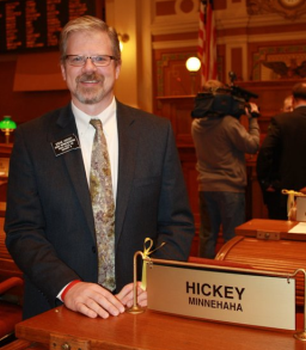
Steve Hickey, former Republican state representative and a champion of the bill to bring the nine sisters justice, says that the legislature's actions in 2010 "made South Dakota a great place for pedophiles." (Photo: SteveHickeyforstatehouse.com)
Child USA founder Marci Hamilton, the nation’s leading expert on child sex-abuse statutes of limitations, reiterated Hickey’s statement in testimony to the South Dakota legislature and to Native News Online, backed by a national analysis of statute-of-limitations laws since 2002.
“South Dakota is the only state that has reduced its statute of limitations since I started [this work] in the ‘90s,” Hamilton told Native News Online.
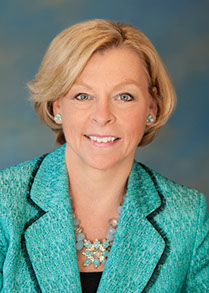
Marci Hamilton, the nation’s leading expert on clergy sex abuse and child sex-abuse statutes of limitations, testified before South Dakota lawmakers asking them to expand the state’s statute in 2012 and 2015. “I urge you to change these laws so that you'll know who the people are that are preying on your children, so that the children can be protected,” she said in her 2015 testimony. (Photo: Child USA)
There are states with more stringent statutes, but none that have reformed their statutes only to backtrack, as South Dakota has, she said. “It's a civil-rights story. I’ve never seen so many ugly forces gathered together to try to retraumatize child sex-abuse victims.”
In contrast, at least five states and Washington D.C. have passed a “lookback” window allowing people to file sex-abuse lawsuits even after the statute of limitations had expired.
In New York, where that window closed in November 2023, it allowed for at least 3,000 cases to be filed, including suits against state prisons, jails, and hospitals where victims say abuse occurred for decades.
'IT IS UP TO THE COURT ... NOT THE LEGISLATURE'
Steven Smith—the Church’s attorney responsible for the law change that resulted in the dismissal of the Charbonneau sisters’ case — denies that the legislation he wrote has directly blocked victims from seeking justice in the courts.
Smith told Native News Online by phone that his law had “nothing to do with” the sisters’ claim, because the state Supreme Court didn’t dismiss the boarding-school cases based on the new statute directly, but instead chose to re-evaluate the legislative intent of the Childhood Sex Abuse statute, and applied the one-year statute of limitations for personal-injury suits in South Dakota.
Asked about his motive, Smith said that he wrote the legislation because he had child sex-abuse claims coming in that he deemed “very suspect” for not aligning with the dates when the lone “bad actor” with substantial claims against him was at St. Joseph's. (Smith wouldn’t identify this “bad actor,” but prior testimony to the legislature indicates that he was referring to convicted priest Brother Miles.)
The additional “nebulous” cases detracted from those that might have been legitimate, Smith said. But his legislation blocked all Indian boarding-school abuse claims from going to court, including “justified claims,” which is how he described the Charbonneau sisters’ case.
“I have never denied that those sisters were abused. I fully believe that they were abused,” Smith told Native News Online by phone. “When you have so many people whose claims were nebulous, at what point does that actually help individuals who may, in fact, have been negatively impacted? Those who may bring a justified claim would have to have their claims tossed into the [pile] with those just seeking a quick handout.”
Neither the Diocese of Sioux Falls nor the Diocese of Rapid City responded to Native News Online’s repeated requests for comment.
Greg Yates, who worked on cases naming nearly 100 plaintiffs who experienced childhood sex abuse in South Dakota, said that’s not the whole story. All but two of those cases were dismissed before the victims could get their day in court, he said.
“Technically, Steven Smith is correct,” Yates said. “But he went to the South Dakota legislature behind the backs of the victims who had pending cases and defamed them and their attorneys, inferring their claims were manufactured, which resulted in the passing of HB 1104. As a result… a flurry of motions to dismiss based upon that newly enacted statute was filed. Clearly, his behind-the-scenes legislative actions precipitated and was the impetus for the dismissal of almost 100 [plaintiffs] of childhood sex abuse at the boarding schools, based upon the statute of limitations."
The dismissal had the effect of the South Dakota legislature usurping the role of the state’s justice department.
“It is up to the courts to sort out the merits of individual cases, not the legislature to determine which ones deserve their day in court and which ones do not,” Rep. Hickey said in his 2013 testimony to the House Judiciary Committee. “Additionally and respectfully, it is not our place as legislators to play psychologist and determine what repressed memories are reliable and which aren't.”
Lawmakers' ignorance of the history and present-day effects of boarding schools was part of the problem in gaining any traction to reform the statute of limitations, former South Dakota legislator Kevin Killer, a former Oglala Lakota president, told Native News Online.
Killer introduced or cosponsored legislation to repeal or revise the statute of limitations five times, beginning in 2012. But restricted time limits for testimony and the difficulty of explaining the 150 years of boarding-school history that led survivors to the state capitol were just a few of the challenges, he said.
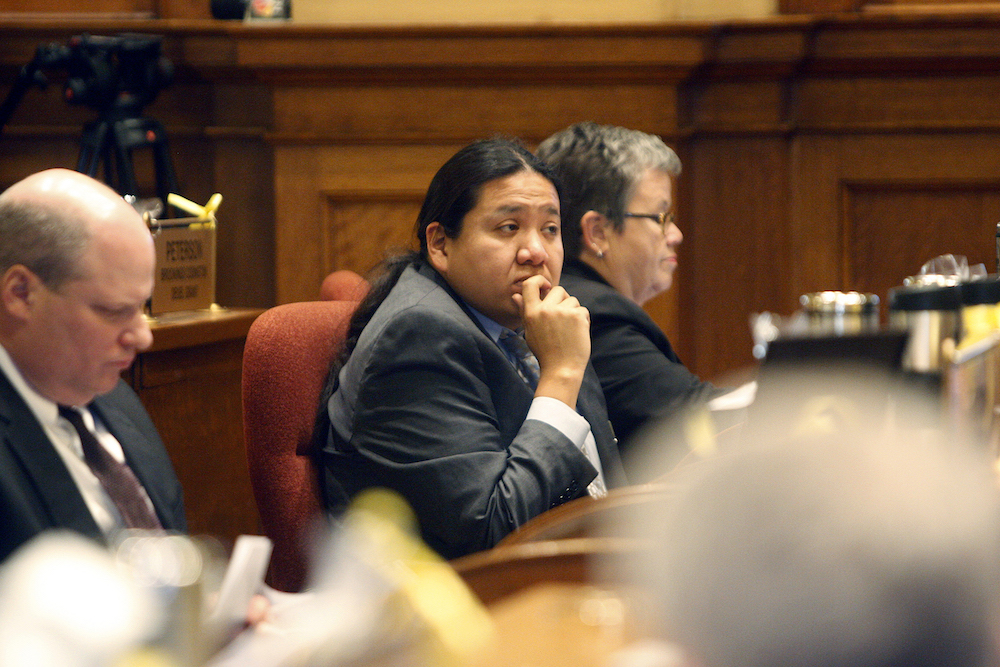
During his time as a South Dakota legislator, Kevin Killer, a former Oglala Lakota president, introduced or sponsored bills to repeal or revise the statute of limitations five times, starting in 2012. Each time, it required giving legislators a history lesson on Indian boarding schools. (AP Photo/Rapid City Journal, Chris Huber)
“The frustrating part about that was that [legislators] were actively learning about the [boarding school] history, but at the same time… this was the only place for these sisters to go to,” Killer said, adding that the bill itself only got about 30 minutes of testimony from both sides. “Initially, this all should have been done in a court of law.”
Mary Lou, who joined her sisters three times in Pierre to make their case before state legislators, said that she left feeling pissed off each time.
“It was like they didn’t believe us,” she said.
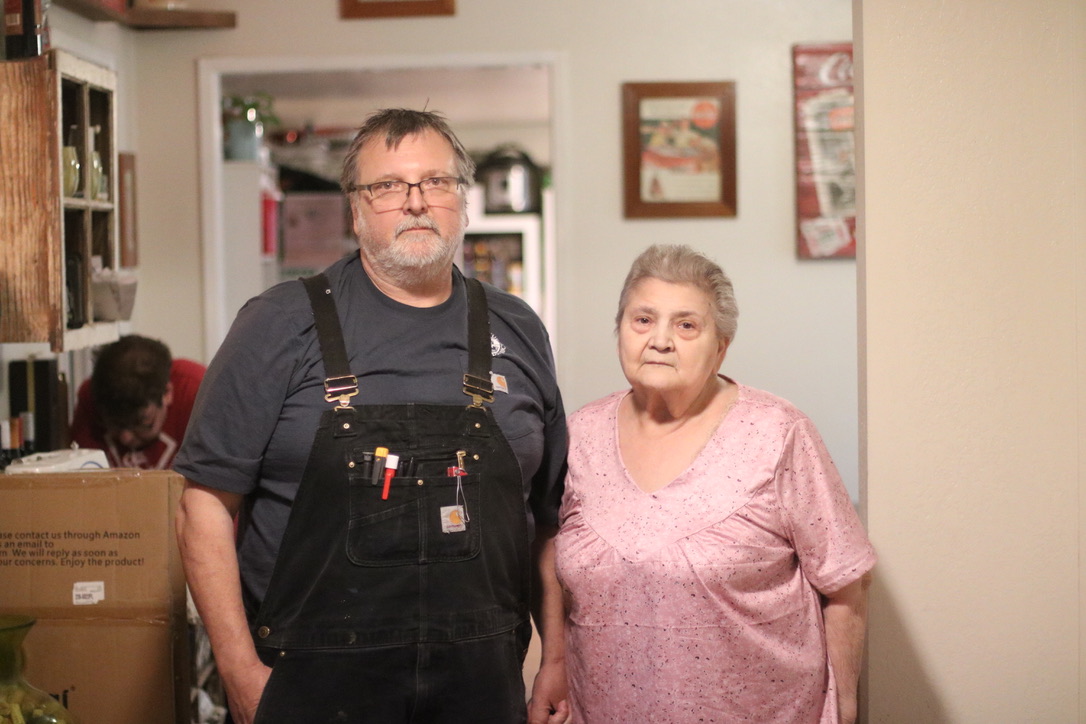
Mary Lou and her son, Neil, at their home in Granite Falls, Washington, in May 2023. Mary Lou moved in with her son and his family after her husband passed. (Photo: Jenna Kunze)
'DON'T GIVE ME A DOLLAR, JUST TELL ME YOU DID IT'
Mary Lou tries not to fret about the past. She told her husband and their children about her boarding-school experiences around 2010, when she came back home after testifying in court for the first time. She thought her husband wouldn’t accept her, but was relieved when he reassured her that nothing she experienced as a child was her fault. She thought that by speaking her truths aloud for the first time, she could eventually bury them forever.
To date, no person or entity has ever taken responsibility for the horrors Mary Lou and her sisters endured as girls. Still, at 80 years old, Mary Lou still holds out hope. For her, healing would look like accountability. “Don't give me a dollar, just tell me you did it,” she said.
“I would like apologies,” Mary Lou said. “To acknowledge that they did evil. It won’t ever be over until they do recognize it. I want it to be over.”
READ PART 2: "There justice would be my justice."
